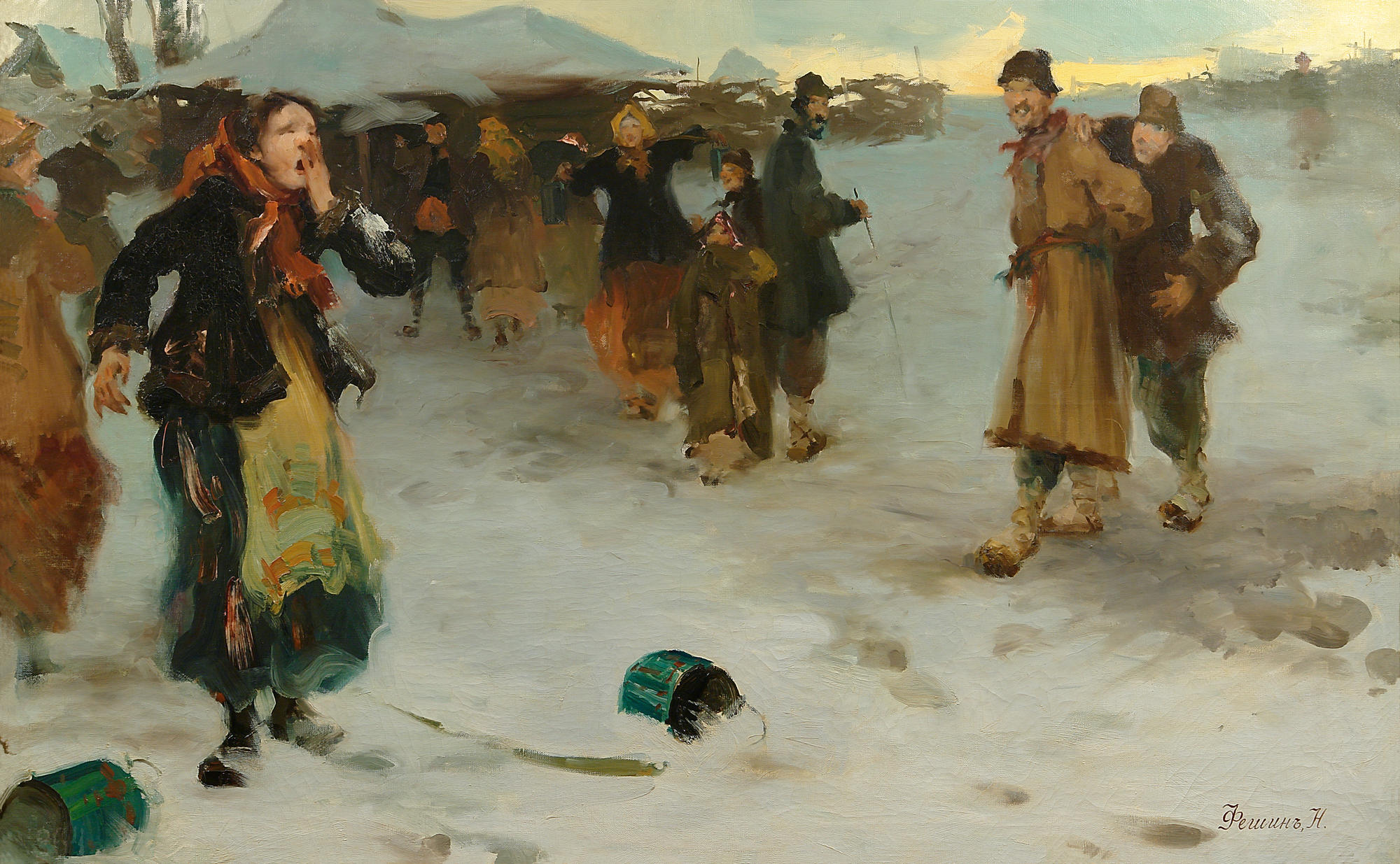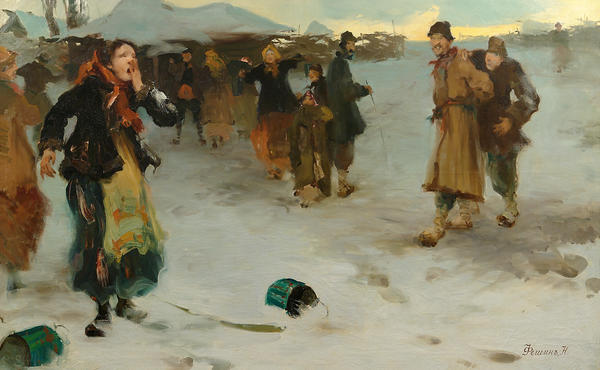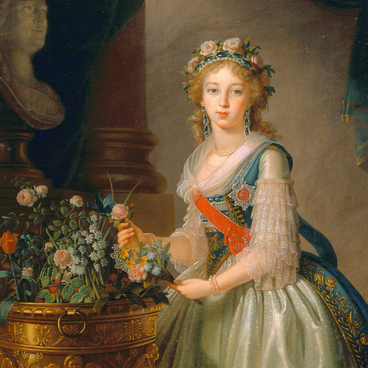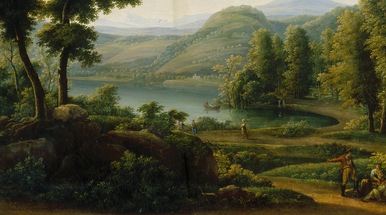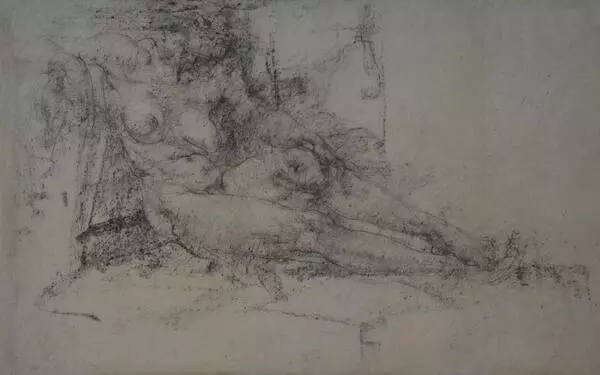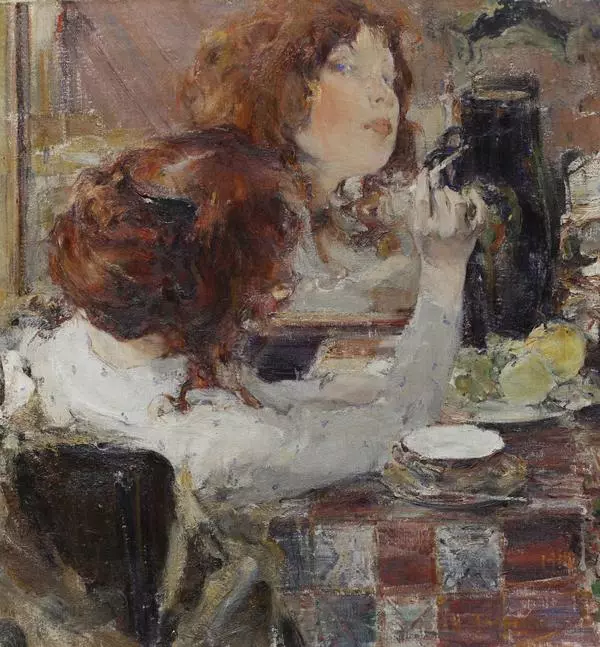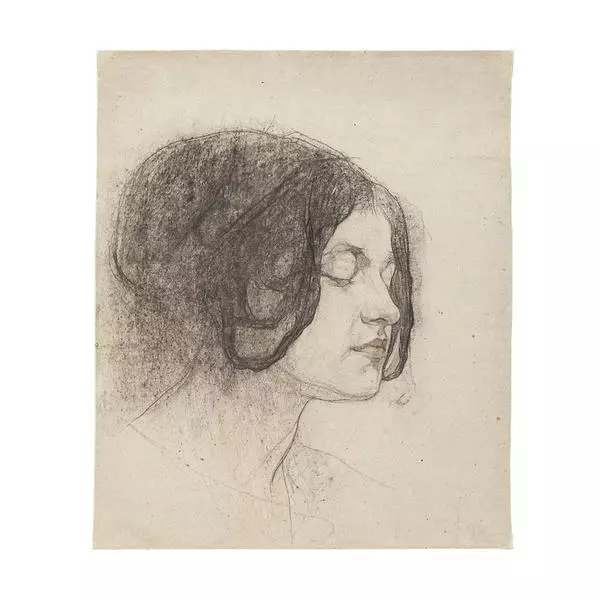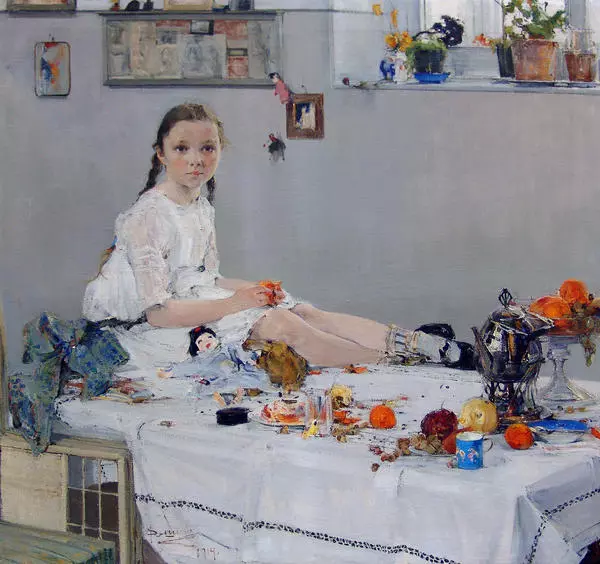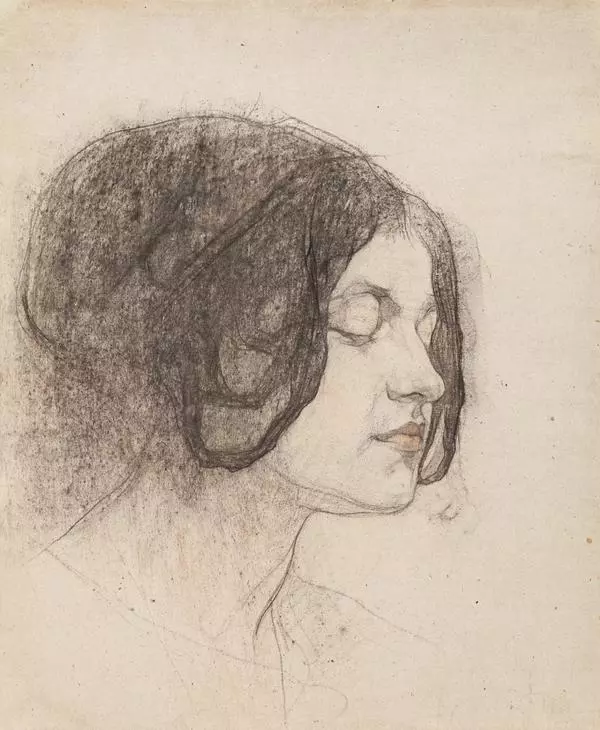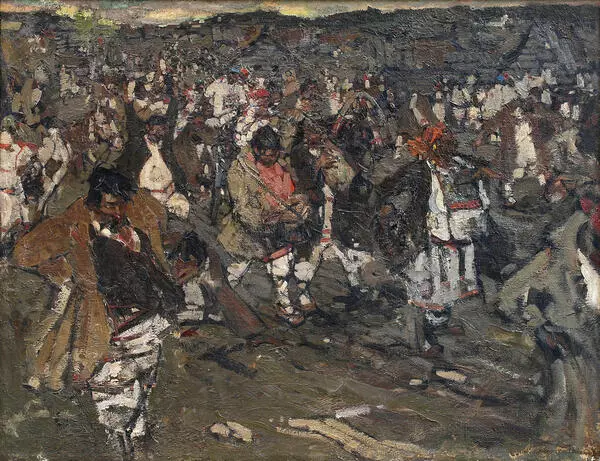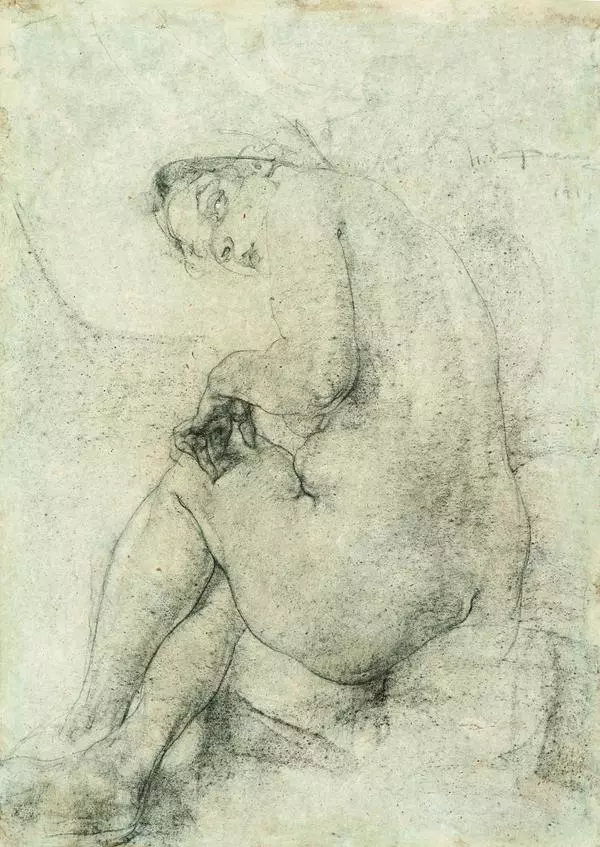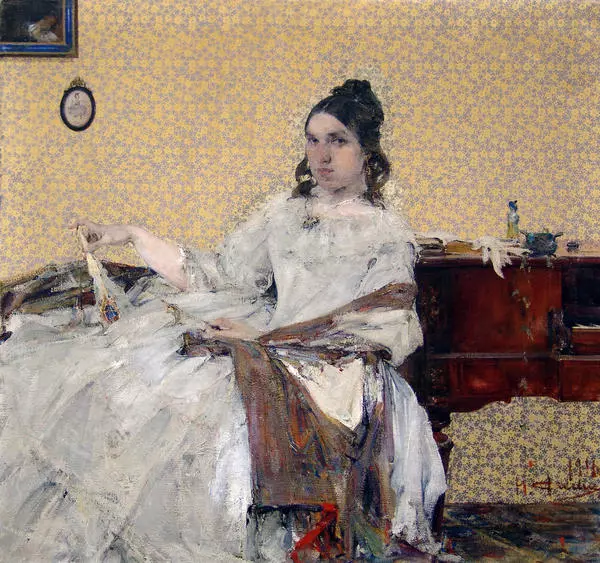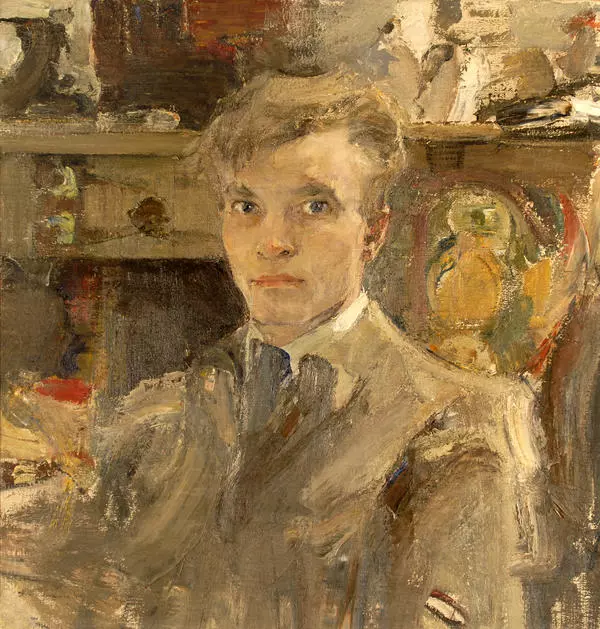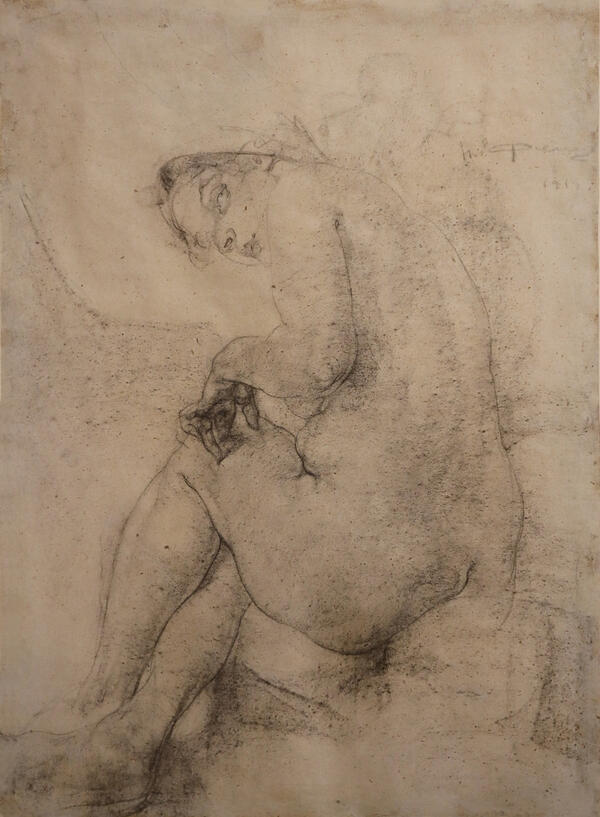Nikolai Fechin painted genre paintings, portraits and landscapes. In 1901-1909, he studied at the Imperial Academy of Arts under Ilya Repin. After graduation, he was an instructor at the Kazan School of Art. In his paintings, Fechin used the techniques of Russian impressionism, but in a more dynamic and decorative manner.
The Portrait of the Unknown Lady (1908) won him a gold medal at the Munich International Exhibition in 1909. In 1916, the artist was awarded the title of academician. His contemporaries appreciated his paintings for their expressiveness, amazing color contrast, and technical brilliance of peculiar broad strokes that reminded those of the Swedish artist Anders Zorn. In 1926, Ilya Repin wrote: ‘Fechin is a major painter of our time.’
A Bad Joke continues the traditions of Russian genre painting of the second half of the 19th century. This is one of the artist’s early works that he painted during his years at the Academy of Arts. It combines the seemingly conflicting qualities of academic mastery, folk tradition and modernism techniques that emerged on the cusp of the 20th century. Fechin painted it as a sketch for his graduation work. He did not make it into a painting - perhaps because he thought that it was not persuasive enough. But the Academy decided to keep the unfinished painting in its museum, which was a great honor for Fechin who was still a student at that time.
Fechin spent a lot of time creating detailed sketches of peasant life thus bringing a minuteness of realistic detail to the painting. In A Bad Joke he depicted the vulgarity and awkwardness of peasant life in a realistic manner devoid of the elegiac simplification.
The artist displays a range of diverse feelings experienced by the characters: the girl’s face distorted from resentment, the smirking faces of the offenders who played a bad joke on her, and the perplexed faces of the characters in the background.
Although Fechin failed to complete the painting, he managed to create an intricate composition and bright characters through the remarkable level of detailing that made them look realistic. Fechin noted:
The Portrait of the Unknown Lady (1908) won him a gold medal at the Munich International Exhibition in 1909. In 1916, the artist was awarded the title of academician. His contemporaries appreciated his paintings for their expressiveness, amazing color contrast, and technical brilliance of peculiar broad strokes that reminded those of the Swedish artist Anders Zorn. In 1926, Ilya Repin wrote: ‘Fechin is a major painter of our time.’
A Bad Joke continues the traditions of Russian genre painting of the second half of the 19th century. This is one of the artist’s early works that he painted during his years at the Academy of Arts. It combines the seemingly conflicting qualities of academic mastery, folk tradition and modernism techniques that emerged on the cusp of the 20th century. Fechin painted it as a sketch for his graduation work. He did not make it into a painting - perhaps because he thought that it was not persuasive enough. But the Academy decided to keep the unfinished painting in its museum, which was a great honor for Fechin who was still a student at that time.
Fechin spent a lot of time creating detailed sketches of peasant life thus bringing a minuteness of realistic detail to the painting. In A Bad Joke he depicted the vulgarity and awkwardness of peasant life in a realistic manner devoid of the elegiac simplification.
The artist displays a range of diverse feelings experienced by the characters: the girl’s face distorted from resentment, the smirking faces of the offenders who played a bad joke on her, and the perplexed faces of the characters in the background.
Although Fechin failed to complete the painting, he managed to create an intricate composition and bright characters through the remarkable level of detailing that made them look realistic. Fechin noted:
